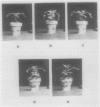Abstract
Dry weight, leaf number, and leaf size of marigold plants (Tagetes patula) grown from emergence for 18 days on horizontal clinostats rotating at 15 revolutions per hour (rph), were similar to those of plants grown for the same period on vertically oriented clinostats rotating at 15 rph. The horizontally grown plants exhibited some epinasty which disappeared when plants were placed upright for 24 hours. Vertically grown plants when placed on horizontal clinostats for 24 hours exhibited more epinasty than plants grown from emergence on horizontal clinostats.
Data are provided to demonstrate that leaves undergo movement (bending) during each rotation cycle that leads to the development of a leaf curvature that is oriented away from the direction of rotation. The results of this study suggest that epinasty of plants placed on horizontal clinostats could be due to uncontrolled movement of plants during rotation rather than controlled by gravity nullification. The usefulness of horizontal clinostats for gravity nullification or simulating weightlessness on plants is questioned.
Full text
PDF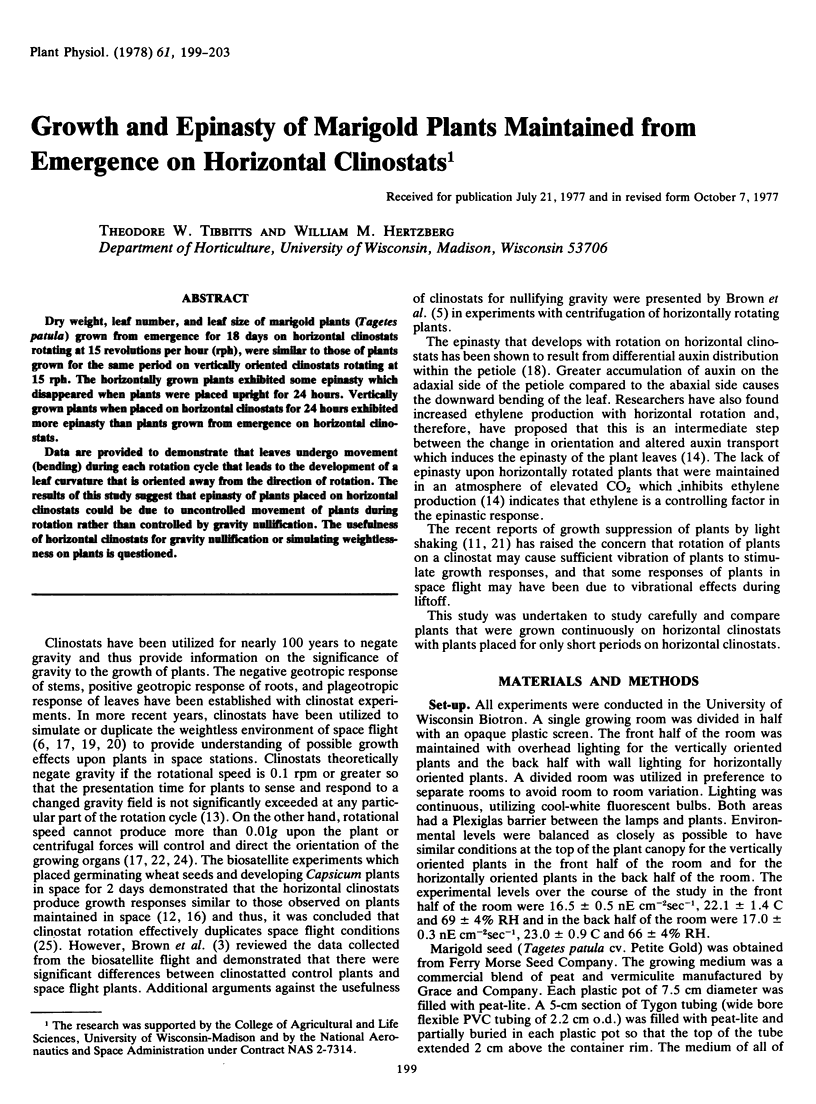
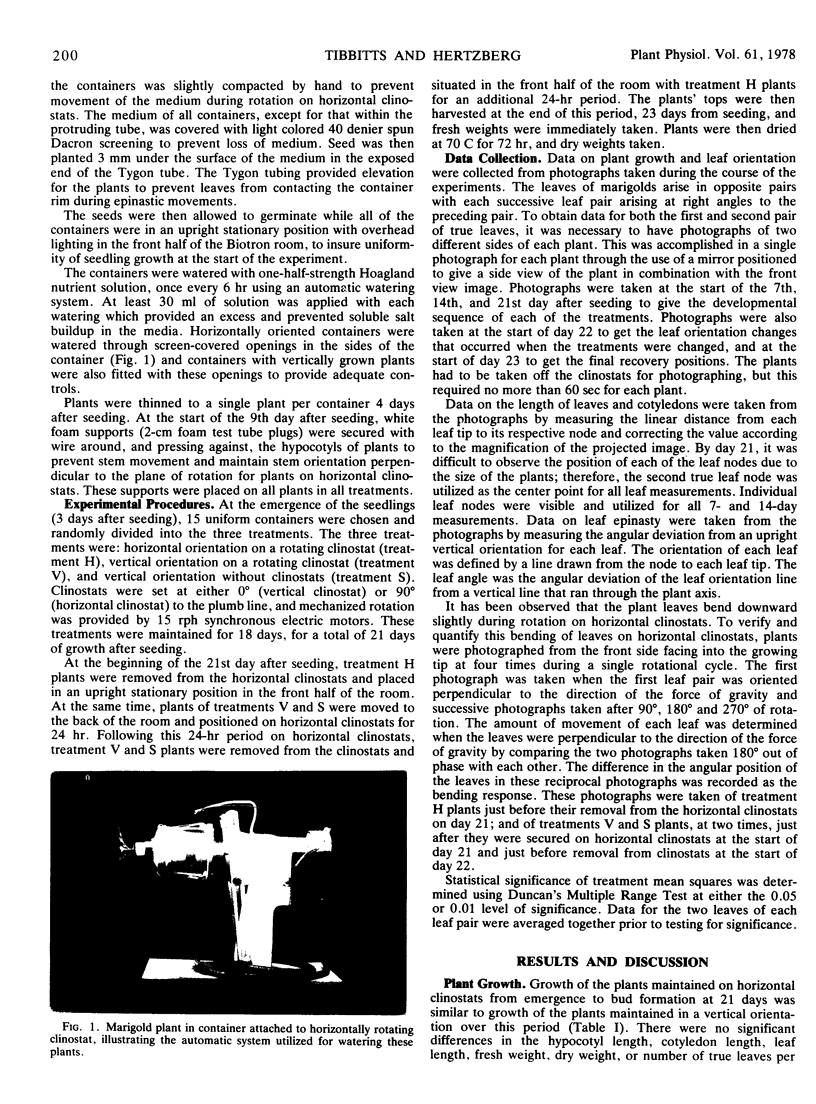
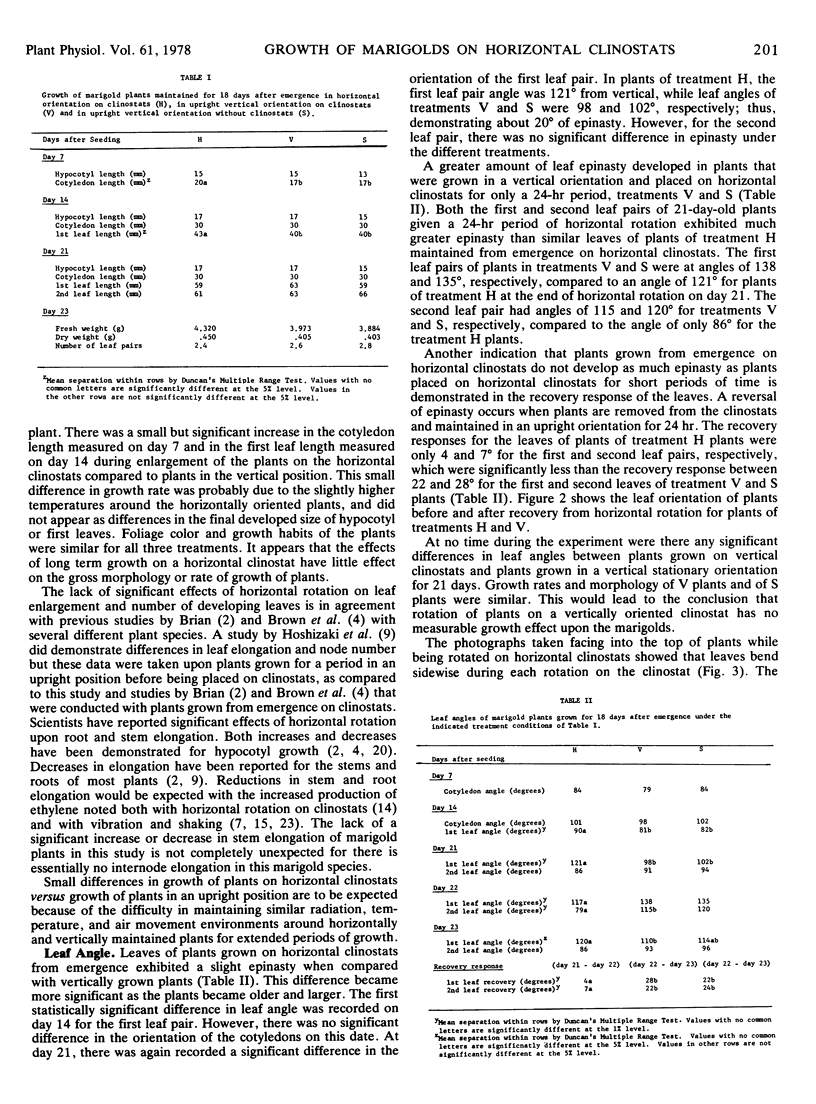
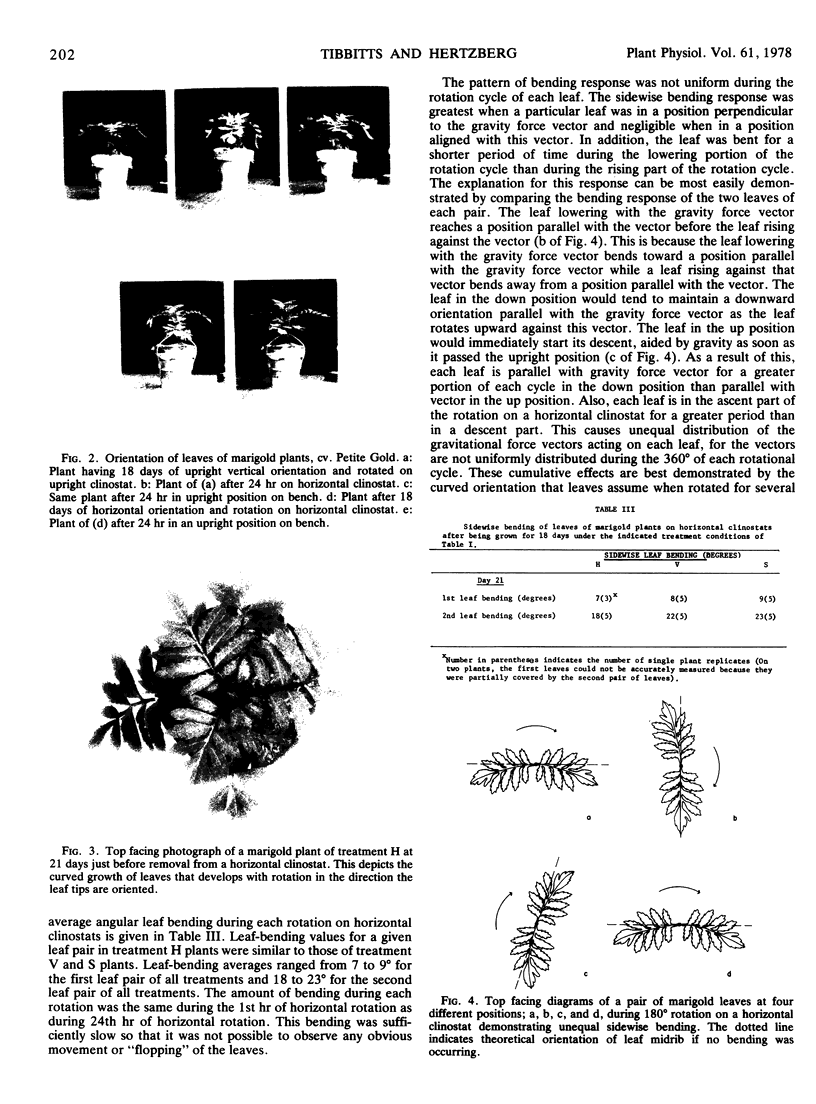
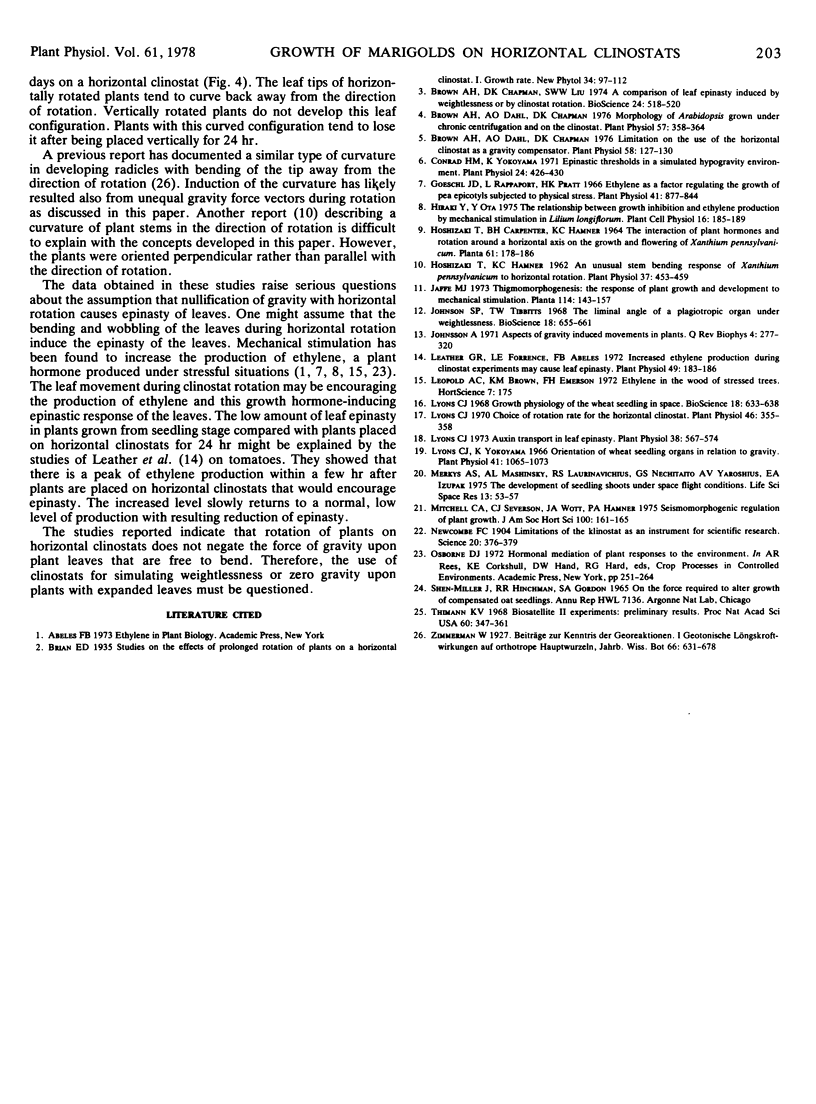
Images in this article
Selected References
These references are in PubMed. This may not be the complete list of references from this article.
- Brown A. H., Dahl A. O., Chapman D. K. Limitation on the use of the horizontal clinostat as a gravity compensator. Plant Physiol. 1976 Aug;58(2):127–130. doi: 10.1104/pp.58.2.127. [DOI] [PMC free article] [PubMed] [Google Scholar]
- Brown A. H., Dahl A. O., Chapman D. K. Morphology of Arabidopsis Grown under Chronic Centrifugation and on the Clinostat. Plant Physiol. 1976 Mar;57(3):358–364. doi: 10.1104/pp.57.3.358. [DOI] [PMC free article] [PubMed] [Google Scholar]
- Goeschl J. D., Rappaport L., Pratt H. K. Ethylene as a factor regulating the growth of pea epicotyls subjected to physical stress. Plant Physiol. 1966 May;41(5):877–884. doi: 10.1104/pp.41.5.877. [DOI] [PMC free article] [PubMed] [Google Scholar]
- Hoshizaki T., Hamner K. C. An Unusual Stem Bending Response of Xanthium pensylvanicum to Horizontal Rotation. Plant Physiol. 1962 Jul;37(4):453–459. doi: 10.1104/pp.37.4.453. [DOI] [PMC free article] [PubMed] [Google Scholar]
- Johnsson A. Aspects on gravity-induced movements in plants. Q Rev Biophys. 1971 Aug;4(2):277–320. doi: 10.1017/s0033583500000652. [DOI] [PubMed] [Google Scholar]
- Leather G. R., Forrence L. E. Increased Ethylene Production during Clinostat Experiments May Cause Leaf Epinasty. Plant Physiol. 1972 Feb;49(2):183–186. doi: 10.1104/pp.49.2.183. [DOI] [PMC free article] [PubMed] [Google Scholar]
- Lyon C. J. Choice of rotation rate for the horizontal clinostat. Plant Physiol. 1970 Sep;46(3):355–358. doi: 10.1104/pp.46.3.355. [DOI] [PMC free article] [PubMed] [Google Scholar]
- Lyon C. J., Yokoyama K. Orientation of wheat seedling organs in relation to gravity. Plant Physiol. 1966 Jun;41(6):1065–1073. doi: 10.1104/pp.41.6.1065. [DOI] [PMC free article] [PubMed] [Google Scholar]
- Merkys A. J., Mashinsky A. L., Laurinavichius R. S., Nechitailo G. S., Yaroshius A. V., Izupak E. A. The development of seedling shoots under space flight conditions. Life Sci Space Res. 1975;13:53–57. [PubMed] [Google Scholar]
- Newcombe F. C. LIMITATIONS OF THE KLINOSTAT AS AN INSTRUMENT FOR SCIENTIFIC RESEARCH. Science. 1904 Sep 16;20(507):376–379. doi: 10.1126/science.20.507.376-b. [DOI] [PubMed] [Google Scholar]
- Thimann K. V. Biosatellite II experiments: preliminary results. Proc Natl Acad Sci U S A. 1968 Jun;60(2):347–361. doi: 10.1073/pnas.60.2.347. [DOI] [PMC free article] [PubMed] [Google Scholar]




